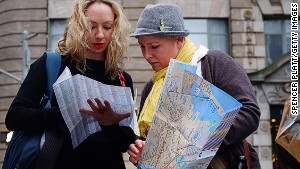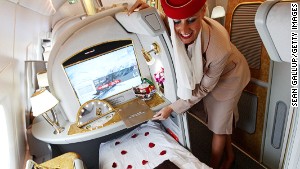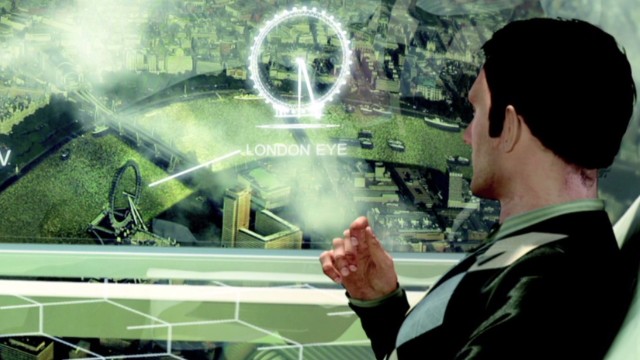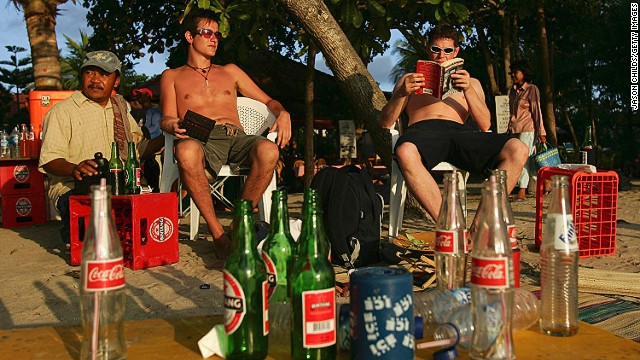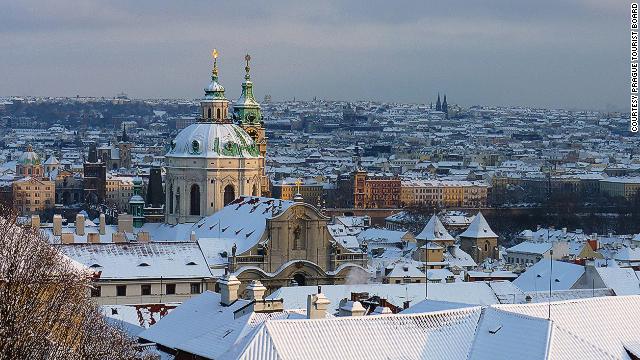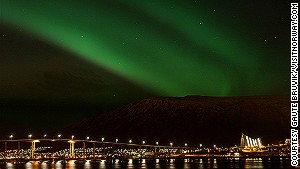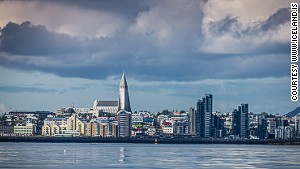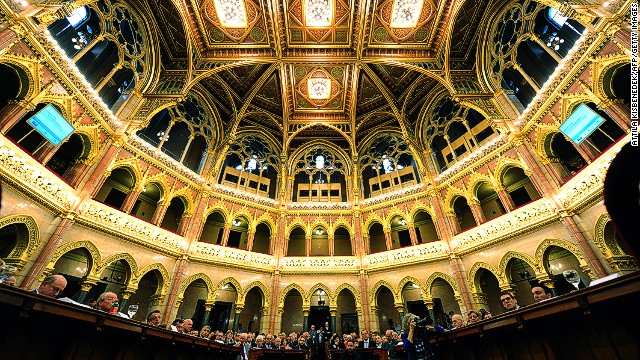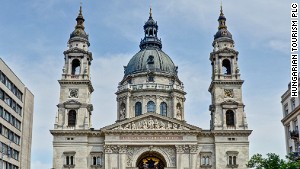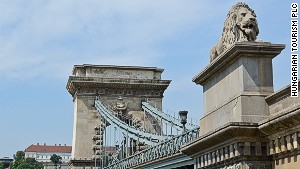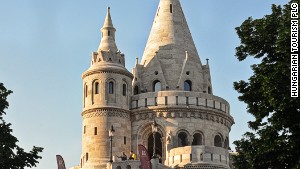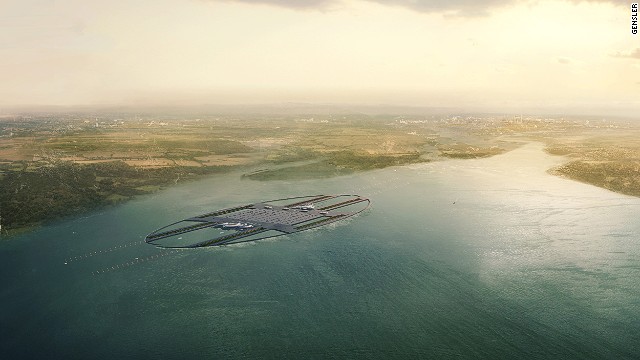True, summer lasts only about two weeks here but that hasn’t dampened the enthusiasm for an alfresco cocktail or two -- most of these spots are open year-round with outdoor heaters and cozy blankets if you want to leave the sheltered inside space.
These 10 panoramic places will be among the best perches in town for New Year revels.
Queen of Hoxton, East London
Located in the heart of Hipsterville with an uninspiring view of surrounding office blocks, this rooftop is a magnet for East London’s creative crowd.
There are fire pits and a toasty tipi in winter and BBQs, frozen cocktails and guest DJs when the sun is shining.
Screenings of cult films sell out in hours, so keep an eye on the bar's Facebook and Twitter pages to score a coveted ticket.Food and drink menus change with the seasons. Right now the Pumpkin Spiced Cider ($8.80) and DIY toasted marshmallows ($1.60) hit the spot.
Queen of Hoxton, 1-5 Curtain Road, Shoreditch, EC2A 3JX; +44 20 7422 0958; open daily, year-round
Radio Rooftop Bar, central London
Indoor glass atrium and warming cocktails make this a top winter spot.A newcomer to the city’s rooftop scene, Radio is among the swankiest.
It’s the crowning glory of a five-star hotel that was once the headquarters of the BBC.
Ten floors up in the heart of Theaterland, the wide
terrace either side of the glass-walled bar lets you tick off most
London landmarks.
A cosmopolitan post-work/pre-theater crowd mingles with well-heeled
hotel guests, so you should dress to impress (no sportswear allowed for
men).Seasonal cocktailslike the Autumn Sundown with Gin Mare, vanilla, basil and apple ($19) are great.
Radio Rooftop Bar, 336-337 The Strand, Aldwych, WC2R 1HA; +44 20 7395 3440; open daily, year-round
Madison, City of London
 Saintly sipping with St. Paul's in the background.Sipping
is a spiritual affair at this City of London bar, with a large outdoor
terrace overlooking the dome of St. Paul's Cathedral.
Saintly sipping with St. Paul's in the background.Sipping
is a spiritual affair at this City of London bar, with a large outdoor
terrace overlooking the dome of St. Paul's Cathedral.
There are 150 different wines to choose from and a
good range of beers, spirits and cocktails. But the signature drink is a
Pornstar Martini with vanilla vodka ($17.60).
The mini-cheeseburgers with blue cheese and bacon ($14.40) are a
manageable bite with drink in hand or you can take a table at the classy
restaurant serving up European fare.Come 5 p.m., it’s wall-to-wall City boys, while the weekend attracts a mixed crowd of tourists and locals.
Madison London, 1 New Change, St Paul’s, EC4M 9AF; +44 20 8305 3088; open daily, year-round
More: Futuristic London airport proposed for Thames island
Boundary, East London
 Boundary: British weather-proof.Sitting atop a converted Victorian warehouse, this is one of the city’s most stylish rooftops.
Boundary: British weather-proof.Sitting atop a converted Victorian warehouse, this is one of the city’s most stylish rooftops.
Wicker chairs and white cushions create a relaxed
Mediterranean vibe, while the new weatherproof pergola means the
infamous British weather won’t bother you one bit.
Classic cocktails are all around $15, or there are pitchers to share.
The zingy Rooftop Garden with lemon vodka and apple brandy ($38) feels
appropriate.You can nibble on olives or go for something more substantial from the all-day menu of seafood, char-grilled steaks and salads (available until 9.45 p.m.).
Boundary, 2-4 Boundary Street (entrance on Redchurch Street), Shoreditch, E2 7DD; +44 20 7729 1051; open daily, year-round
The Big Chill House, King’s Cross
Creative student types call this place home in increasingly cool King's Cross. This large Victorian pub in King’s Cross is a maze of different
floors, with funky decor, rocking DJs and sweaty 20-somethings from
nearby Central Saint Martins College predominating.
This large Victorian pub in King’s Cross is a maze of different
floors, with funky decor, rocking DJs and sweaty 20-somethings from
nearby Central Saint Martins College predominating.There’s a good selection of craft beers, spirits and cocktails, plus tasty bar bites such as chili popcorn prawns with sweet chili dip ($6.50).
The rooftop closes at midnight on the weekends, but downstairs stays thumping until 3 a.m.
Big Chill House, 257-259 Pentonville Road, King’s Cross, N1 9NL; +44 20 7427 2540; open daily, year-round
Vista, central London
 Vista ... has a sweeping one, especially come New Year's Eve.Perched
on top of The Trafalgar hotel in Trafalgar Square, the newly
refurbished Vista has one cracker of a view -- and one of the best New
Year’s parties in town.
Vista ... has a sweeping one, especially come New Year's Eve.Perched
on top of The Trafalgar hotel in Trafalgar Square, the newly
refurbished Vista has one cracker of a view -- and one of the best New
Year’s parties in town.
The ambitiously priced drinks list is dominated by Champagne and creative cocktails.
The Movista is a blend of Jamaican rum with a touch of cherry wine and fresh lime juice, topped up with soda ($19).With its monochrome furnishings and sophisticated air, Vista attracts a suited-and-booted crowd and cashed up tourists looking to escape the hubbub below.
The Trafalgar, 2 Spring Gardens, Trafalgar Square, SW1A 2TS; +44 20 7870 2900; open daily from April to October but also open on New Year’s Eve for the Thames-side fireworks display; $7 cover charge after 4 p.m.
More: 7 hot new London hotels
Upper Deck, Southwark
 Being British, this rooftop bar comes with cream tea and scones.Opened
in April 2013, this terrace overlooking the Thames has glorious views
of Tower Bridge, the Tower of London and World War II warship HMS
Belfast.
Being British, this rooftop bar comes with cream tea and scones.Opened
in April 2013, this terrace overlooking the Thames has glorious views
of Tower Bridge, the Tower of London and World War II warship HMS
Belfast.
Considering it’s in prime tourist territory, prices
are reasonable, with more than a dozen wines on offer, plus bottled and
tap beer and the usual spirits.
You could embrace all things British with a cream tea -- scone,
clotted cream and jam ($8) -- or share a local cheese board with fruity
chutney and artisan bread ($23).You’re unlikely to hear a local accent during the day, but come evening time it’s packed with post-work punters.
Upper Deck, HMS Belfast Visitor Center, The Queen's Walk, Southwark, SE1 2JH; +44 20 7403 6246; open daily from March to November
Dalston Roof Park, East London
 AstroTurf meets gritty inner city.There’s
no real view (unless you count a sloping roof of solar panels), but
this AstroTurfed pop-up atop a four-story former factory is the ultimate
hipster hangout and a great stop to plan for once winter clears away.
AstroTurf meets gritty inner city.There’s
no real view (unless you count a sloping roof of solar panels), but
this AstroTurfed pop-up atop a four-story former factory is the ultimate
hipster hangout and a great stop to plan for once winter clears away.
It’s not as pretentious as it sounds, though, with a casual neighborhood vibe and DJs, stand-up comedy and classic films.
A team of local volunteers tends to grow-bags of herbs, fruits and veg that are blended to make yummy cocktails (from $10).There’s also well-priced wine, beer and cider served in plastic cups and a changing line-up of street food stands.
Dalston Roof Park, 18 Ashwin Street, Dalston, E8 3DL; +44 20 7275 0825; open daily from May-September; one-off membership fee of $5
Frank’s Campari Bar, South London
 Multi-story car park becomes hipster central.Who
would’ve thought a multi-story car park in a nondescript South London
suburb could be the site of one of the capital’s coolest bars?
Multi-story car park becomes hipster central.Who
would’ve thought a multi-story car park in a nondescript South London
suburb could be the site of one of the capital’s coolest bars?
Part sculpture project, part seasonal pop-up, Frank’s is one of the biggest -- and cheapest -- rooftops in town.
You can choose from Campari cocktails($8), local Meantime beer ($7) and a simple wine list -- it’s just white, red or rosé at Frank’s.Then there's grilled sweetcorn ($4) to munch on while you admire the city skyline, including the Shard skyscraper, from afar.







